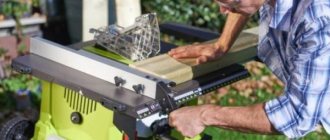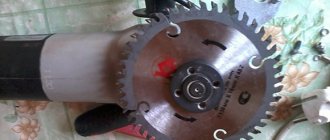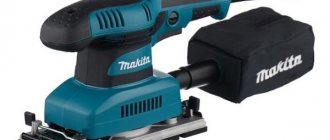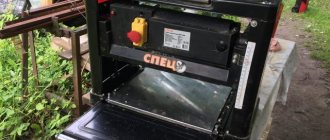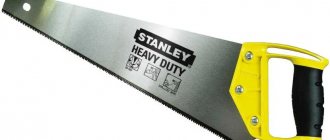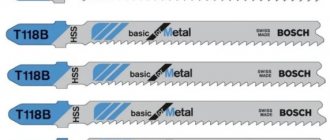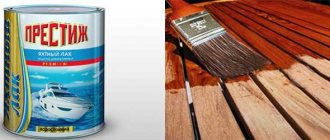Canvas size
Depending on your task, you can choose different blade lengths. For simple boards and small bars, a length from twenty-eight to thirty centimeters is quite suitable. If construction work is underway, then it would be wiser to take a canvas from forty-five to fifty centimeters long.
The basic rule: the length of the product should be half the length of the hacksaw itself, otherwise you can forget about ease of use.
Sharpening and tooth size
The size and sharpness of the teeth is one of the main criteria when choosing a hacksaw. The bottom line is that the small teeth on a hacksaw are for fine work and the long teeth are for rougher work, they are well suited for gardening where neatness is not an issue.
By looking at the photo of wood hacksaws with various teeth, you will see which hacksaw is right for you.
In the hacksaw market, there is a TPI unit, on which the cutting accuracy directly depends; it determines the number of teeth per 1 inch. For example, you need to cut a couple of chipboard boards, in this case it is recommended to use hacksaws with a TPI in the range of seven to nine, then the cut will be smooth and neat.
If you need to work in the garden, cutting down branches, for example, then accuracy is not so important; a hacksaw with a TPI of three to six will suffice. The tooth pitch can be from two and a half to six and a half millimeters and from one and a half to five millimeters.
The shape of the teeth of a classic saw is triangular and can be easily sharpened. However, in modern realities you can more often find hacksaws with trapezoidal teeth. It positions itself as a stronger and more durable saw.
But proper sharpening with such a tool will be impossible, because the steel from which the hacksaw is made does not lend itself to a simple file, and it will be almost impossible to repeat this shape. As soon as the saw becomes dull, we either change the blade or go and buy a new one.
Sharpening a hacksaw on wood with your own hands is not a difficult task, but it is not easy either. Before starting sharpening, it is necessary to carry out routing so that the blade does not jam during sharpening. To do this, we use a special tool called sharpening.
Sharpening itself requires completely different tools.
What should a hacksaw blade be like?
The basis of all hand hacksaws is its blade. When choosing a hacksaw, the first thing to pay attention to is the length of the blade. A blade that is too small is not convenient to use when sawing large diameter branches.
A long blade also creates difficulties in the form of vibrations when sawing oak, ash, and maple.
If you need to do small jobs like sawing bars, plinths and other small parts, then the optimal blade length is 20-30 cm.
We recommend reading:
- TOP 15 best models of electric lawn mowers: rating for reliability and quality
- The best pumping stations for the home - rating of models and manufacturers of 2019. 110 photos of pumps and their characteristics
- How to repair a lawn mower - main breakdowns, possible problems and a description of the repair yourself (105 photos)
If you are planning serious construction work, then it is best to choose a canvas of 45-50 cm.
Read here The best garden shredders: TOP 3 best models and brands of 2022 (95 photos and videos)
You can ideally accurately determine the required length of the hacksaw blade by calculating it. It should be 2 times larger than the diameter of the objects that will be sawed.
If the blade is too short, the teeth will get stuck in the layer of sawdust and will have to be cleaned each time.
The width of the canvas is generally within 10-20 cm. With a smaller width, the canvas will break at any slightest bend right during operation.
However, in this regard, you should not buy a very wide canvas, because this parameter will also interfere with your work. Some craftsmen can make hacksaws with their own hands.
We recommend reading:
- Which generator is best for home? Tips for choosing and rating the best models of 2019 (110 photos and videos)
Gasoline trimmer: tips for choosing, review of the best models, types and applications of trimmers (120 photos)
- Cultivator for a summer residence - tips on choosing the best models and features of their use (115 photos + video)
Instructions for properly sharpening a hacksaw
Before starting work, you need to firmly clamp your blade in a vice so that it does not wobble. Having secured the blade, take a file and begin sharpening the left edge on the first tooth. When doing this, you need to hold the file at a sixty-degree angle.
Use a file using even and smooth movements. In exactly the same way, you should sharpen all the left parts of the odd teeth, and then the right ones. Then we turn the blade over, fasten and sharpen the teeth of the even row.
Having finished the work, be sure to clean the blade from burrs with a specialized velvet file.
How to choose a piston compressor- In what cases is washing machine repair needed, what should everyone know?
- Do-it-yourself wood splitter - drawings, diagrams, dimensions. 120 photos of homemade wood splitters
The right approach to choosing a hacksaw
Works in which hacksaws are used are divided into carpentry and joinery. In carpentry, accuracy is more important, while in carpentry, speed is more important.
First of all, you should pay attention to the quality of the metal of the blade; to do this, we take the hacksaw in our hands and bend it 30-45 degrees. This must be done as carefully as possible, since low-quality metal is very easy to break.
After carrying out this operation, let's look at the bend; if a slight deviation appears there, then the metal of this product is of very low quality.
The most important criterion when choosing your hacksaw is the price. Naturally, the choice before you is a cheap Chinese hacksaw of poor quality or an expensive saw from a well-known brand. However, having overpaid once, you will no longer have to constantly change the blade or buy a new tool. Major brands pay close attention to the quality of steel and hardening used in their blades.
Septic tank Topas - detailed review and description of technical characteristics- Petrol mower repair: overview of faults and effective methods for solving them. Photo instructions from the pros!
- Garden composter - which one to choose? Review of the best views for a summer residence (100 photos)
The main tasks of the teeth are to remove sawdust and, directly, to cut the wood itself.
Teeth with a TPI setting of up to seven are fast and easy to use. Therefore, the choice of a hacksaw should depend entirely on your own needs.
Tool selection rules
To select a suitable hacksaw for wood, you will need to follow some rules:
First, you need to decide in advance what the hacksaw will be used for. If you are going to do carpentry work, then it is better to take the option with fine teeth. Carpentry work requires major work.
It is also important to determine how often the hacksaw will be used in practice. When performing one-time work, the best option would be a saw with hardened teeth. It will last longer and will not require sharpening. If you choose a professional tool, you should study the correct sharpening.
Be sure to pay attention to the quality of the metal the hacksaw has. If marks remain on it after bending, then the metal is bad and the tool will not last long.
The cost of the saw is another important purchasing criterion. When purchasing any tool, the cost of a quality tool will be an order of magnitude higher than a simple one. Likewise, the best hacksaw will have a fairly low price.
Narrow hacksaw
A small narrow hand saw, consisting of a straight thin blade and a handle. It mainly serves for various thin. Most often, it has a blade with triangular double-sided teeth.
One of the main disadvantages of this type of hacksaw is the possibility of deflection during your work with a wooden product.
The best hacksaws for metal
A special feature of a manual hacksaw for metal is a short and narrow blade with a very small multi-directional tooth. The blade is fixed in a steel frame, replacement is carried out quickly. The tool is characterized by mandatory hardening and the use of high-speed steel. The cutting element is under constant high thermal loads and periodically fails, so several blades are needed to complete the task. Used in home and locksmith workshops.
Vira 801010
The metal model is lightweight; the body is made of durable, corrosion-resistant aluminum alloy. The structure is rigid and does not deform under load. A cutting element 30 cm long is installed; the set includes a 24 TPI blade made of heat-resistant tool steel. The screw clamp allows you to fix the file at a convenient angle.
The handle is made of impact-resistant plastic and rubberized material, fits well in the palm of your hand and does not slip. According to reviews, the profile reduces the load on the hand during intensive and prolonged work. There is no play in the handle, which has a positive effect on the quality of the cut. Designed for processing metal workpieces.
Advantages:
- Quick blade replacement;
- Low price;
- Anatomical handle;
- High strength.
Flaws:
- Not the most reliable blade included.
Matrix 77593
A metal hacksaw for a blade 30 cm long. To replace the cutting element, a screw clamp is provided, with which you can vary the angle of inclination. Two positions are available - 55 and 90 degrees, which expands the application possibilities. The delivery set includes a bimetallic blade with a fine tooth, which ensures accurate cutting of workpieces.
The rigid, reinforced frame has a rectangular cross-section and is protected from corrosion by powder coating. The design has a cavity - this container can store 5 replacement sheets. The tension mechanism securely fixes the blade, which contributes to precision when performing metalwork.
Advantages:
- Light weight;
- The tensioning mechanism does not become loose during use;
- Effectively processes laminate, chipboard;
- Low price;
- Comfortable handle.
Flaws:
- Weak fixation of the container stopper.
Stanley Heavy Duty 1-20-110
It has a durable steel frame that is resistant to deformation and mechanical stress. There is a container in the upper part in which you can store replacement blades. The blade is mounted using a screw spring mechanism, which makes the tension stable. The rigidity of the structure improves productivity and allows the processing of metal workpieces made of hard alloys.
The handle has an anatomical shape and is made of rubberized material. When sawing, it does not slip, does not rub, or cut the palm. The inclined frame design optimizes force. It is equipped with a blade made of tool hardened steel, the teeth are small, frequent, and sharply sharpened. The blade has increased wear resistance.
Advantages:
- Increased service life of all structural elements;
- Reliable fixation of tension force;
- Light weight;
- Carefully cuts metal;
- Good protection against rust.
Flaws:
- Overcharge.
Bow saws
This is a heavy-duty hacksaw. The main advantage of working with this type is the ability to work with the product you need from absolutely any angle. Using a bow saw, you can process the material from any side, lengthwise and crosswise, and make complex workpieces alone.
A small hacksaw is perfect for small jobs in the garden; it is not recommended to use it when sawing large materials.
The best hacksaws for wood
Boards, timber, floor lath, eurolining - all these materials are cut using a hand saw. The wood is processed along and across the grain, which is taken into account by tool manufacturers. A carpenter with 23 years of experience found out which hacksaw was better for wood. Out of 9 samples, the craftsmen chose 4 options, which attracted attention with the quality of the blade, good sharpening and ergonomic handles.
Armero A531/400
The model of the famous Spanish company was created for working with wood and blanks made from this material. The blade is made of tool carbon steel with a high chromium content, this has improved hardening. The metal holds its edge well, which reduces the cost of routine maintenance. It has good elasticity and resistance to mechanical stress. The protective coating prevents corrosion.
The length of 40 cm makes the saw convenient for cutting 150-200 mm boards, facing strips and moldings. Medium tooth size and pitch (9 pcs per inch), 3D factory sharpening ensures a neat cross cut. Works well with wood of different densities. Does not tear fibers and does not require strong pressure when sawing.
Advantages:
- Light weight;
- Does not deform during operation;
- Low price;
- High performance;
- Difficult to blunt.
Flaws:
- Not detected.
The saw has a two-component handle made of impact-resistant and anti-slip material. The shape takes into account the anatomical features of the palm: the instrument fits well in the hand and does not leave calluses during intensive use.
Gross Piranha 24111
A good hand saw for wood with a fine tooth (frequency 11-12 per inch), developed by German engineers. Easily copes with different species, can be used for cutting chipboard, fiberboard, HDF, laminate. Can be used for cutting expanded polystyrene. Equally effective for transverse and longitudinal cuts of dense, loose wood. Durability is ensured by carbon steel with a protective coating that contains corrosion inhibitors.
It has a 3D sharpening, the edge is treated with Teflon, which reduces the applied physical effort. The cut is smooth, according to user reviews, and is not inferior in quality to processing with a circular saw. The two-component handle is made of rubberized plastic and provides a secure grip. When used for a long time, it does not require effort and does not get stuck in the wood.
Advantages:
- Good sharpening;
- Protective case included;
- Storage hole on hooks;
- Suitable for fine finishing.
Flaws:
- Overcharge.
Irwin Xpert 10505538
The American brand hacksaw is made in Denmark. The blade is made of tool steel 1 mm thick. This makes the model reliable, durable, and tough. A special coating with inhibitors protects against corrosion. At the beginning of the blade there are small teeth that make cutting easy. The main blade is a medium-sized hardened tooth with 3D sharpening and special holes that increase the rate of chip removal.
The handle is two-component, made of impact-resistant polymer and rubberized material. It is secured with three bolts and does not loosen during intensive use. The side surfaces of the handle are made with strict adherence to angles of 45 and 90 degrees, which allows you to avoid wasting time using a measuring tool when cutting boards. Design features make sawing with raw wood easier.
Advantages:
- High performance;
- Wear resistance;
- Hole for hanging during storage;
- Sharp sharpening;
- Clean, neat cut.
Flaws:
- Not detected.
Bison Expert 15168-18
Small folding wood saw for auxiliary work on a construction site, cutting branches. The hacksaw blade is made of heat-treated carbon tool steel and is protected from external aggressive factors by an anti-corrosion coating. Medium-length teeth are arranged in increments of 9 pieces. per inch. The profile of the cutting edge and the length make it easy to cope with sawing 50x50 mm timber and trimming molded products.
The handle is a two-component format, made using durable materials and taking into account the anatomy of the human hand. Does not slip out in wet weather or when force is required. The blade folds and locks securely, providing a high level of safety. A good option for a hiking trip.
Advantages:
- High quality steel;
- High-quality factory sharpening;
- Possibility to replace the blade;
- Sawing raw wood.
Flaws:
- Not suitable for intensive use.
